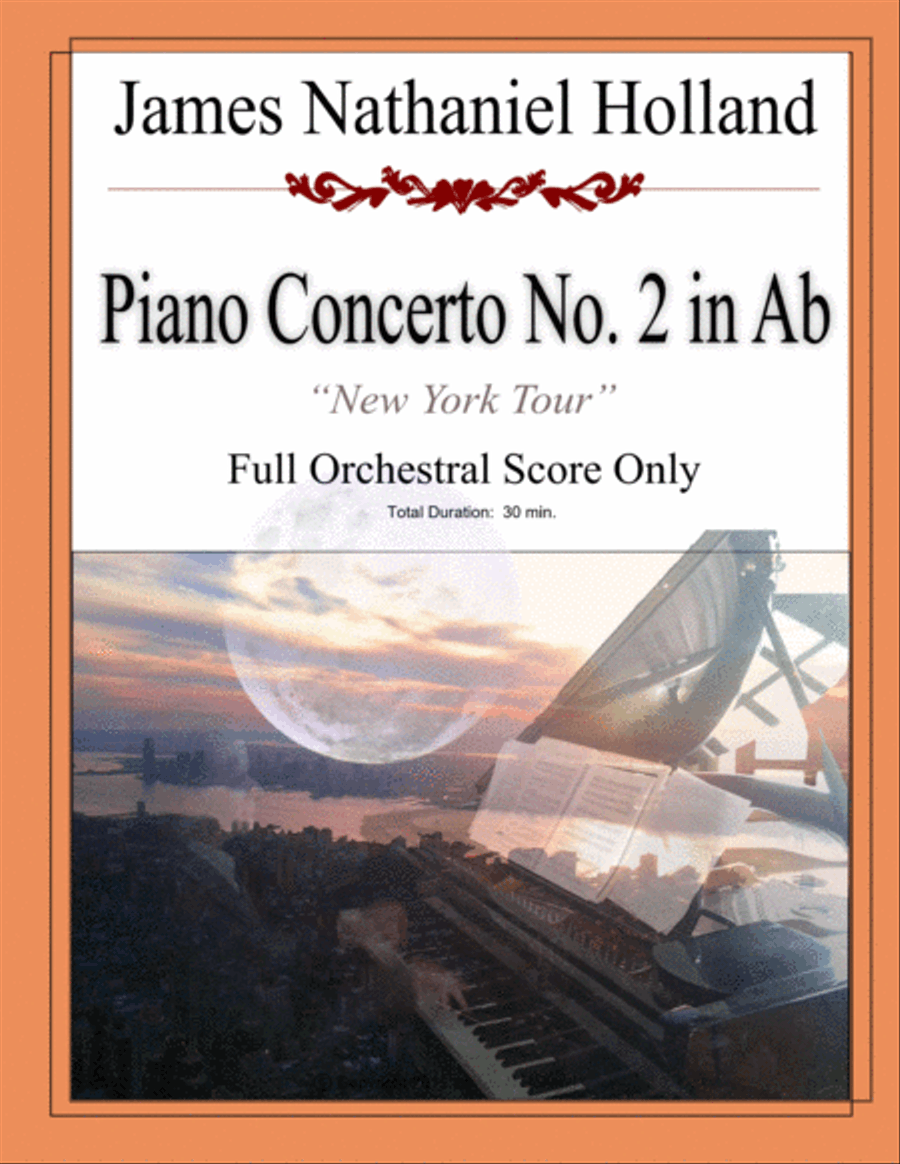Full Orchestra - Level 5 - Digital Download SKU: A0.730464 Composed by James Nathaniel Holland. Contemporary,Holiday,Patriotic. Score and parts. 80 pages. James Nathaniel Holland #3629797. Published by James Nathaniel Holland (A0.730464). (Duration: 25 minutes) Full Orchestral Score Only in Concert Pitch.James Nathaniel Holland is an American classical music composer of operas, symphonies, ballets, songs, and other musical concertworks that incorporate a unique, eclectic, blend of romantic, classical, world and jazz styles. In this second of his piano concerto, he blends jazz with sensitivity, rhythmic to lyrical. This concerto is entitled New York Tour because like the city that inspired it, it travels throughout times, musical neighborhoods and cultures. Great compliment in programming with Mozart piano concertos or Gershwin's Rhapsody in Blue to feature American classical composers or for the Fourth of July summer concert. YouTube presentation: https://www.youtube.com/watch?v=eAKDrGPLa3g Instrumentation: picc, fl., ob.12, clBb 12, Bsn12, Hrn 123, Tpt 12, Trmb. 12, Tba, Timp, Perc (glock, bass drum, small gong, s. cym w/mall and stl., slapstick, tri., hh) Piano solo, strings.Born and raised in Indiana, James Nathaniel Holland studied music at DePauw University, Vienna Austria, Interlochen National Music Camp and Indiana University (Bloomington, IN). At these schools many of his early pieces were premiered and performed, with one work being selected for main-stage production in the season. Moving to Los Angeles and then settling in New York, he performed professionally sometimes as a singer, sometimes as a pianist, sometimes as choral conductor. He composed incidental music for the stage. In 2002 he founded a composers collective where they showcased their work. He was one of the first composers to participate in the American Music Center's initial on-line library. The New Jersey Concert Opera and the Gay Men's Chorus of New Jersey also featured his comic operas and art songs. From 2005 he moved to Costa Rica where he organized concerts with visiting guest artists to present his chamber music to the public. Presently he lives in a castle in the central mountains of Costa Rica. Website: http://www.lacoronadelossantos.net/jamesnathanielholland.html YouTube Channel: https://www.youtube.com/user/composerjnholland
